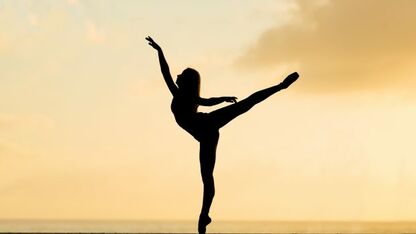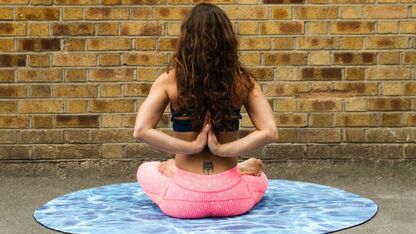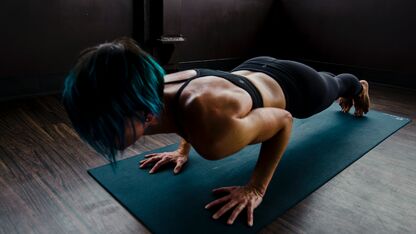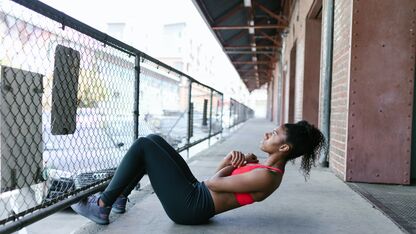What is warrior pose?
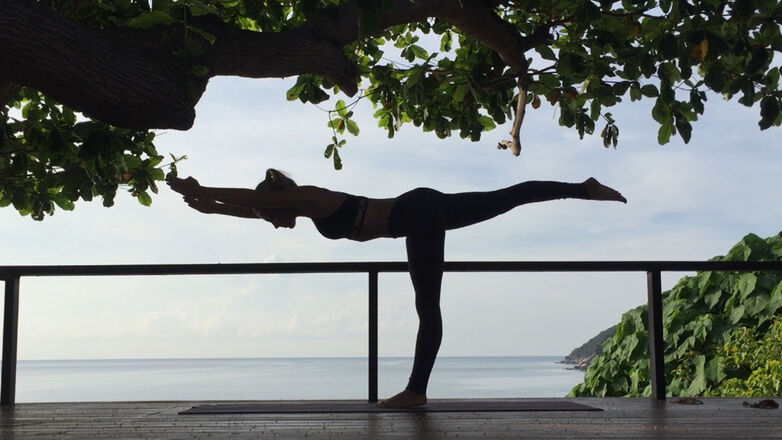
Warrior is a famous yoga posture that requires strength and stability. There are different variations of a Warrior pose, but the most common ones are Warrior I, II and III. They are approachable for most bodies and are less intimidating than some of the other crazy yoga poses, while still being great postures for building strength, confidence, and body awareness. Warrior I and II are great for beginners, while Warrior III is a bit more challenging.
You will always find Warrior poses in all the classes I teach. Virabhadrasana (Warrior pose in Sanskrit) strengthens the arms, shoulders, thighs and back muscles, all at once. That's what makes this posture so unique and is the main reason I incorporate them into my daily flows.
Warrior I / Virabhadrasana I
Warrior I strengthens and tones the legs while it increases the flexibility in the hips. By lifting up your arms, you can really work on opening up the chest and prepare the body for back-bends. Warrior I develops concentration, balance and grounding. This pose improves circulation and respiration and energizes the entire body.
Warrior I is a complex pose and has a lot of alignment cues to work with. Focusing on all these elements while keeping up with the breathing can be quite a challenge, but that's what a Warrior pose is all about. The Warriors challenge and test us, but in doing so bring us strength, focus, confidence and courage.
Warrior II / Virabhadrasana II
Warrior II does not only require strength and stability, but also flexibility in the hips. This pose teaches us about ‘steadiness and ease’, which is one of the key principles of yoga asana practice and means that the posture should be stable yet comfortable.
Warrior II teaches us to listen to our own body and to do what feels right. You want to open up the hip and sink down so your front knee and ankle align. While focusing on the legs, you also want to stretch both arms out to the side, engage the muscles and bring the shoulder blades towards the spine.
Warrior III / Virabhadrasana III
Balancing on one leg, shifting your weight forward, extending one leg backwards, keeping the hips aligned, core engaged, spine neutral and of course focusing on the breath… That's what Warrior III is all about. It’s a balancing posture that not only challenges our focus, but also strengthens the smaller muscles in the feet and ankles. The arms can be helpful with finding balance if you bring them out to the side in airplane position. You can also place them in front of your heart or extend them out overhead for an extra challenge.
Emotional level
Warrior poses also work on a mental and emotional level. In Warrior I, it’s all about aligning and making the connection with the physical self. It challenges you to open up the heart and develop courage. This powerful and strong pose can help you gain inner strength and courage, letting you open up to yourself and others.
In Warrior II, the challenge is to find peace in the moment, being present. Since we practice Warrior poses daily, there’s a chance that this can lead to resistance and boredom. When these feelings arise, challenge yourself to find ease and stillness of mind in places you would rather not be.
Just like Warrior II, Warrior III can bring up some intense feelings of wanting to escape. All the alignment details and cues can become really challenging which can trigger you to give up or quit. This pose teaches us to stay balanced in our emotions, stay present with what we are feeling without reacting to every little thing that comes up in our emotional experience.
Virabhadrasana/Warrior pose is such a powerful pose and it not only benefits the physical body, but also the mind. We should all learn how to be more comfortable in these postures, so we don’t stand on our mat as a worrier, but a Warrior.
Don't forget to follow me on Instagram for a daily dose of yoga!




